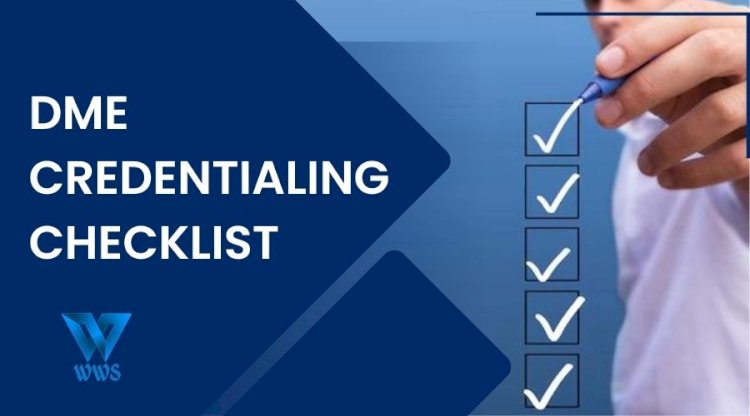DME CREDENTIALING CHECKLIST
DME providers don't always follow the right procedures for insurance companies, which can lead to a lot of wasted time and effort.While it may sound like an extreme case, it's more common than you think.

Credentialing Best Practices
We all have heard stories about the DME practice who got in trouble for not following proper credentialing procedures. While it may sound like an extreme case, it's more common than you think. The truth is that most DME providers don't fully understand how to get into the right systems and follow the right procedures for insurance companies. This can lead to a lot of wasted time and effort on their part as well as frustration from patients who have to wait longer than expected.
The process of medical credentialing takes time
It's important to understand the process of DME credentialing, and how long it takes. You have to get all your paperwork in order before you can start applying for jobs with insurance companies. You need a license from each state (depending on what equipment you're going to deal with ), so if there are multiple states in which you need licenses this can take months or even years!
You need to get into the right systems and follow the right procedures for the insurance companies
You need to learn the billing policies of each insurance company you will be working with and how to accept their insurance, bill them, and receive payment from them. You also need to get into the right systems and follow the right procedures for the insurance companies. If you don't know how to do these things yet, we can help!
You need to have an overview of the billing policies of each insurance company you will be working with
It's important that you understand the billing policies of each insurance company you will be working with. You need to know how to submit claims to the insurance companies, and when it's time to follow up if they don't pay your bill.
You must also make sure that you're familiar with all of their payment requirements and due dates. Not adhering to these rules could result in a bad relationship with your patients and cause them grief, as well as potential legal problems later on down the road if something goes wrong during the service period.
After you get credentialed, you need to maintain it, which requires continued data and paper submission
In addition to getting credentialed, you need to maintain it. This requires continued data and paper submission.
- You need to keep up with updates in the insurance industry. For example, as of this writing, there is a lot of talk about how much data should be reviewed in an audit and how much time companies should have for data gathering purposes before being audited by a DME credentialing organization (CVO).
- You also need to ensure that your program stays current with changes in the regulatory environment which impacts billing requirements, coding conventions, and so on; for example, new insurance forms are published periodically; each year CMS publishes new coding guidelines for medical equipment suppliers (and these codes affect how providers bill their patients); or certain states require their Medicaid fraud office or other investigative agencies do random audits of providers' Medicare claims history while others do not bother with such reviews; etc.
You need to keep up-to-date with all the frequent regulatory changes in the insurance industry
- Put out a credentialing checklist and start getting organized. Know what steps you need to take and who can help you along the way.
- Don't wait until it's too late! Get started with credentialing as soon as possible so that you don't end up paying for services out of pocket or forgoing care altogether due to lack of coverage.
- Have the right people on your team (That would definitely be us - WWS
- -someone who knows insurance companies' billing policies, especially if they vary between different companies; someone who can work with local providers; maybe even an attorney who specializes in medical malpractice cases...the list goes on!
-
At WWS we work with you to understand your vision, layout what obstacles may arise during this process, and has experience working through said obstacles.
- Know your credentialing requirements
- Understand who your carriers are
- Have an overall understanding of their billing policies
- Familiarize yourself with their coding and documentation guidelines
- Understand their claims processes and forms, including appeal processes
Conclusion
Credentialing can be a daunting process, but it is also an important one. As we discussed earlier, it’s vital to protect your business from the risk of losing insurance coverage and being unable to continue providing services. If you want to keep your practice running smoothly and efficiently while maintaining a high standard of care for patients, then getting credentialed is your first step towards doing that. We hope that this article has given you some insight into what kind of paperwork will be involved with getting credentialed as well as how long it takes before becoming eligible for reimbursements.
Let us know your challenges with payers!
Schedule To Connect For A Strategic Consultation With A Credentialing And Contracting Specialist.

 Martin Jacob
Martin Jacob 















